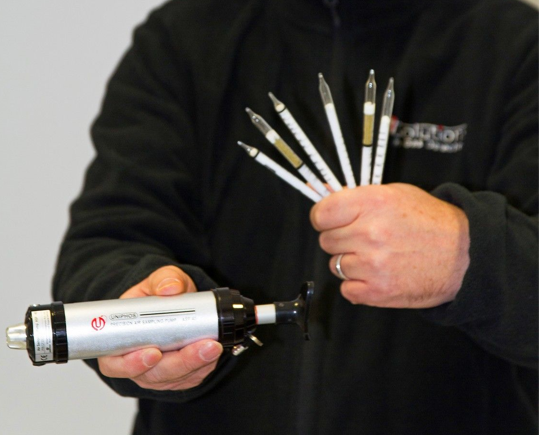We used to detect dangerous gases in quite primitive ways. For example, with a candle, a canary, or a mouse. According to the motto "it's no good if the bird falls off the perch. "
When the German company Auer (now MSA) developed the gas test tube decades ago, this technology represented an enormous breakthrough. Significantly better and more accurate than anything that had existed before. However, from today's point of view, this form of gas measurement is already quite simple, almost primitive. A glass flask filled with a chemical reacts to a particular gas and thus changes colour accordingly. What is the point of such crude equipment in 2022, in the age of the iPhone 13? After all, a test tube only allows a short-term measurement, so it is virtually only a snapshot, which is a significant disadvantage. Furthermore, this is a disposable product. A tube can only be used once and is then (special) waste. We already have gas detectors that can permanently measure up to 7 gases simultaneously. Fixed, portable, semi-portable, with wireless options, full colour display, app control and smart sensors... Are tubes not outdated?
Why tubes?
Despite modern equipment, there are still plenty of good reasons for using a test tube. Like the range of gases that you can measure. Roughly speaking, you can detect over 30 different gases with an electronic gas detector. However, only a few manufacturers offer so many sensors. With a PID, you can measure a lot of hydrocarbons. But only these. And not selectively either. Several hundred different gases can be detected with test tubes, which broadens the horizon considerably. Furthermore, the measurement of exotic or problematic gases, such as chlorine gas, is cheaper, especially when used occasionally.
Finally, there is the question of concentration. The test tubes can measure almost exorbitant gas concentrations compared to gas detectors. Let's take PH3 (phosphine), which is (among other things) used for fumigation in grain storage. A standard PH3 sensor has a measuring range of 1ppm to approximately 20ppm. PH3 test tubes measure up to 16.000ppm. A subtle difference, isn't it? So despite all its weaknesses, the good old test tube will probably remain in use for a while.

Any questions or remarks regarding our blog? Get in touch:
CALIBRATE IN GAS DETECTION: The 7 * KEY * facts about the sense (and nonsense) of calibration [Gas meter]
Choices to be made in Gas Detection.
Contaminated instruments need service too

